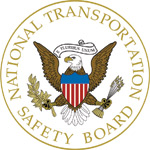Senior Reporter
NTSB Encourages Fleets to Root Out Bad Drivers
This story appears in the April 3 print edition of Transport Topics.
ALEXANDRIA, Va. — A top National Transportation Safety Board official called on motor carriers to do a better job of identifying drivers in their employ with bad driving habits.
Robert Molloy, director of the Office of Highway Safety, said it’s not uncommon for NTSB investigators to see repeat mistakes by drivers with bad safety records who are involved in truck and bus crashes.

A case in point involved a recent crash involving a “terrible” driver who had been disciplined 27 times and had more than 18 critical events on his record but was still behind the wheel, Molloy told a committee of American Trucking Associations’ Safety Management Council at a presentation here March 28.
“I’m hoping this is not typical for all your drivers,” Molloy said. “One of the problems was that all the company’s driver records were on paper, and the company had no way of knowing whether he was a good or bad driver. One of the key elements of a good safety program is data.”
Another crash Molloy investigated involved a driver who had high blood pressure and a seizure only a week before a crash, somehow slipping under the company’s safety net.
A driver with a serious medical condition can sometimes be difficult for a company to monitor since drivers sometimes are not truthful in telling examiners about their medical histories, Molloy said.
Fatigue, another problem identified in about 10% of all truck and bus crashes, is not always the result of drivers using all their allowable hours, Molloy said.
“We have to educate people off the road about fatigue so when they’re on the road they’re not fatigued,” he said. “Adjustments to hours of service won’t change things, but proper fatigue management will.”
Molloy pointed to NTSB’s recent “most wanted list” as offering tips for motor carriers and drivers to stay safe. The list calls for carriers to deploy crash avoidance technologies, in-cab event recorders, create fatigue management programs and provide educational information on the dangers of distracted driving.
It may be that some drivers just are not made to be behind the wheel of a truck, but recorders in the cab can help identify those drivers who need further training, Molloy said.
“But you’ve got to know the bad things, the bad habits drivers have, and this type of system would help,” he said.
NTSB supports the entry-level driver training rule and the use of speed limiters that adapt to traffic conditions, Molloy said.
“We’re on the same page with many safety issues,” he told the group of mostly ATA trucking leaders. “But sometimes it feels like we’re at loggerheads, and we’re fighting over minor differences in the same safety programs.”
In a presentation during the session, Larry Minor, Federal Motor Carrier Safety Administration associate administrator for policy, said the number of FMCSA- certified medical examiners has exceeded 52,000.
Minor said more than 14.7 million exams were conducted from May 2014 to February 2017. Of that, 14.1 million, or 96.4%, received medical cards.
More than 8.4 million of those who passed their exams received two-year medical cards, while 4.4 million were issued one-year cards. Nearly 330,000 or 2.4% were issued less than one-year medical cards, according to agency data.
About 1% of the exams conducted resulted in drivers being temporarily denied a medical card, while 1.6% were permanently disqualified.
“The program seems to be working very well for us,” Minor said.

